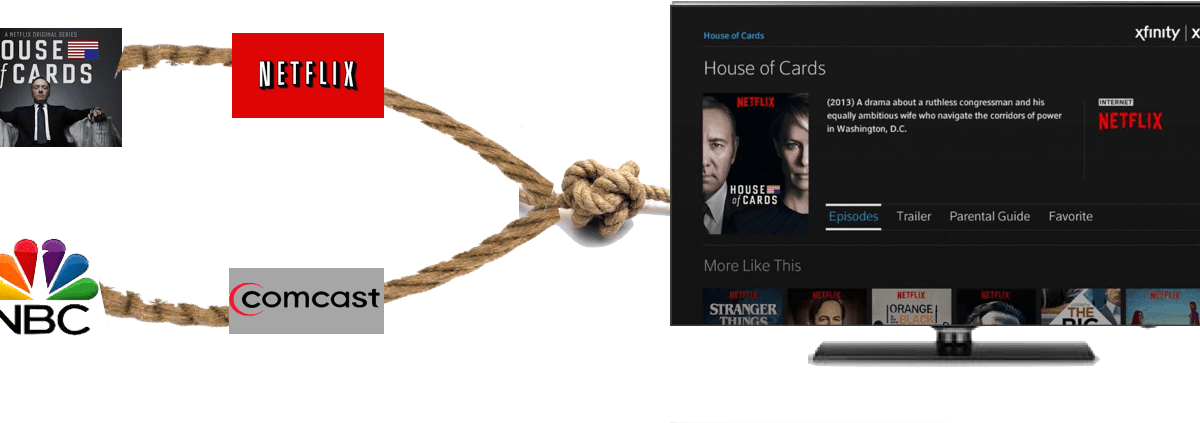Frenemies and Knotted Value Chains

Intelligent Automation and Five Disruptive Shifts of Control
April 23, 2017
The Ultimate Managed Device
April 23, 2017Comcast advertising Netflix as a feature of its cable TV service would have raised eyebrows once. These days Comcast’s Xfinity service brochures routinely feature Netflix access as a prominent feature of the service.
How did two ferocious rivals who tried to outsmart each other just a few years ago become allies and decide to feature a competing service inside another’s lineup? Welcome to the world of digital value chains where enemies dare to partner. The lessons from this story has relevance in every industry.
Tying the Knot: Netflix and Comcast
Over a decade, Netflix evolved from a mere physical (postal) distributor of content, to an over-the-top (OTT) content distributor, and to a vertically integrated player across the content value chain to create, curate, and deliver content. Meanwhile Comcast was down a similar path, busy buying NBC and investing in content providers.
And then, they decided to tie the knot and put their collective wares on our TVs! Comcast Cable’s Xfinity service added a widget on their display and made access to Netflix content seamless for their customer base. This may seem natural, but it isn’t. Why would I give my competitor digital real estate in my set-top box and help them gain mindshare? Well, if it differentiates my own offering, why wouldn’t I? Et voila, we end up with the frenemy effect — integrating a competitor’s service or product inside ones’s own.
Frenemies Tying the Knot
Digitization is offering up many ways to integrate offerings from different players at any point in the value chain all the way to the point of consumption.
Simply put, value chains have become knotted. The ability to digitally mash-up offerings is accelerating this trend.
We see this in the XfiniFlex dance. We are going to see many more such mash-ups of offerings in the next few years. (A DirecTV and Netflix combo may end up being called FlixDirect, especially if AT&T doesn’t succeed in its Time Warner bid).
Frenemies Galore
Where else has this frenemy effect happened? Last year AirBnB started placing small hotel chains alongside their home listings homes. Another analog business found itself placed inside a digital service!
No discussion of digital value chains is complete without a quintessential “Uber talk”. Uber offering dispatch for traditional taxis as an option for riders is an example of a digitized service incorporating a brick-and-mortar (“analog”) service inside it. This is the opposite of Xfinity placing Netflix inside, where the erstwhile analog cable service placed a digital service in it.

Frenemies in Hi-Tech
The frenemy effect is not limited to brick-and-mortar and its digital twins. In the high-tech sector, Amazon Web Services and VMware announced partnership to provide VMware’s wares as a service. A cloud service wrapped around another cloud service is not big news in the hi-tech world. However, comparable cloud offerings where one is presented inside another provider’s market place is yet another example of the frenemy effect.
All these headache-inducing mash-up’s are starting to form these analog-digital hybrids.

Frenemies Galore Across Industries
One surprising take away from all this:
Digital firms aren’t always eating their analog (brick-and-mortar) twins. The analog firms are morphing and co-existing.
Job Role Evolution in the Knotted World
What does frenemy effect mean for product and channel professionals? Do formulaic channel strategies from vendors (“I build, you sell”) have a place? Will frenemy effect be part of the product development strategies? Will creative alliances will be part of the offer development strategy itself? Will a mash-up of job skills be needed? Will channel management and alliance management skill sets that were previously separate from product development become part of the development process? What do you think about these role evolutions?
Regardless, these quirky knots in the value chain are offering end-customers many combo meals to savor, as more purveyors tie the knot.


